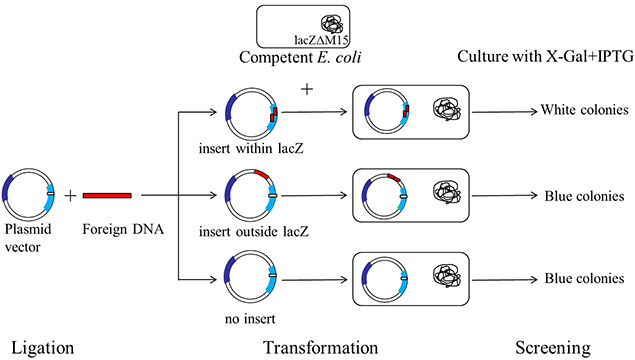Tumor Suppressor Gene p53
The TP53 gene codes for p53 protein (also known as TP53) of an apparent molecular mass of 53 kDa.
It is a Tumor Suppressor gene, its activity stops the formation of tumors. It is located on human chromosome 17p13.1 and encodes a polypeptide chain of 393 amino acid residues.
p53 Protein Regulation:
p53 protein is a transcription factor that regulates the expression of several genes involved in;
- DNA repair
- cell growth
- apoptosis (programmed cell death)
- antioxidant defense
- senescence
Because mutations in the TP53 gene are found in most tumor types and are involved in the complex network of cellular events, it is described as the guardian of the genome and the cellular gatekeeper.
In a normal cell, p53 is inactivated by its negative regulator, MDM2 (mouse double minute 2).
- Upon DNA damage or the stresses, various pathways lead to the dissociation of the p53 and MDM2 complexes.
Once activated;
- p53 will induce a cell cycle arrest to allow either repair and survival of the cell or apoptosis to discard the cell. For example, DNA damage activates p53.
- In undamaged cells, p53 is highly unstable and is present at very low concentrations. This is large because it interacts with MDM2, which causes ubiquitination of p53 and targets it for proteasomal destruction.
- Phosphorylation of p53 after DNA damage reduces its binding to MDM2. This decreases p53 degradation, which results in a marked increase in p53 concentration in the cell.
- In response to double-strand breaks (DSBs) in DNA, protein kinase ATM is activated, activating CHK2 kinase.
- ATM and CHK2 then both phosphorylate p53 at distant sites. Phosphorylation of p53 on amino acid residues in its N-terminal domain by kinases such as ATM and CHK2 alters the domain of p53.
- At the same time, the ATM kinase can phosphorylate MDM2 in a way that causes its functional inactivation. As a consequence of this phosphorylation of both p53 and MDM2, MDM2 fails to initiate ubiquitination of p53, p53 escapes destruction, and p53 concentrations in the cell increase rapidly. Once present in substantial amounts, p53 is then poised to evoke a series of downstream responses.
Now,
- p53 stimulates transcription of the gene encoding a CKI protein called p21.
- This protein binds to G1/S-CDK and S-CDK complexes and inhibits their activities, thereby helping to block entry into the cell cycle.
- Hence, in response to DNA damage, p53 levels increase and arrest the cell at the G1-phase of the cell cycle.
- If all the repairs have been made to the DNA, the cell divides normally and completes the cycle.
- However, if the cell still contains a mutated or duplicated DNA sequence, it dies by a suicidal apoptotic mechanism to prevent its proliferation. In those cells that have mutated or lost the p53 gene, the arrest at G1 does not occur, and the cells that have mutated genomes proliferate and become cancerous.
p53-mediated apoptosis involves the coordination of various function of p53;
- transcription-dependent
- transcription-independent
p53 also involves the transcription factor for numerous genes involved in apoptosis such as PUMA, NOXA.
p53 has cytosolic activities that can induce apoptosis in a transcription-independent manner. p53 can induce mitochondrially outer membrane permeabilization (MOMP), thus leading to the release of cytochrome c from the mitochondria. BCL-XL, BCL-2, and BAX may influence the voltage-dependent anion channel, which may play a key role in the regulation of cytochrome c release.









































